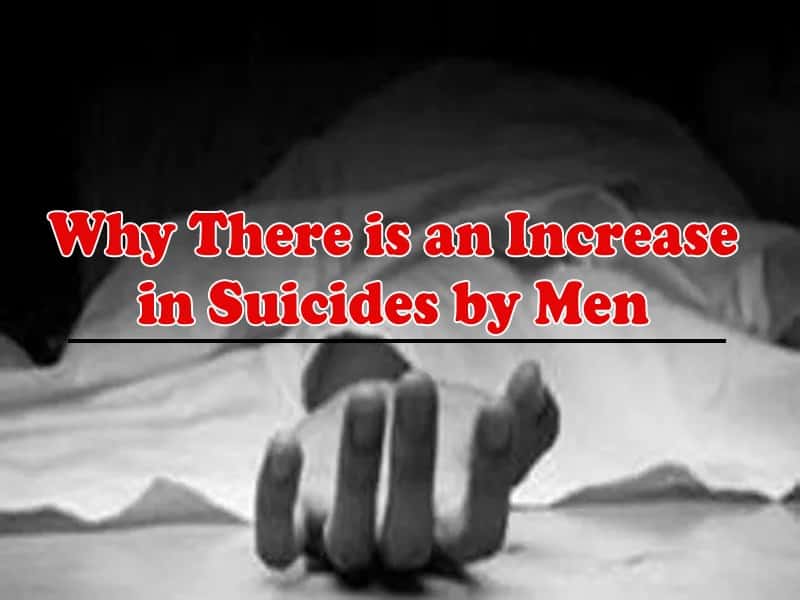Without a doubt, one of the world’s major health issues and leading causes of death is suicide. Suicide is the act of intentionally causing one’s own death. It frequently results from a profound sense of hopelessness, which leads to depression. People who are unable to cope with difficult life circumstances sometimes end up believing that the only way out of their problems is to commit suicide. Such strenuous situations are created in their lives by varying factors, which include financial issues, family issues, societal discrimination, bullying, marital issues, etc. Mental disorders (like autism, bipolar disorder, anxiety, etc.), physical disorders, and even substance use disorders are also considered causes of suicide. Around 80 lac people commit suicide across the globe every year and, unfortunately, approximately 1.6 lacs of those are Indians, bringing our national suicide rate to 12% (calculated per lac). Young adults, those people in the age group of 18–45, account for around 67% of total suicides. Family and societal pressures, the difficulty of finding work, difficulties in relationships, high levels of stress, and other factors may explain why this age group is more likely to commit suicide than any other. If we analyse the case of suicides through the lens of gender, we will find that women typically have higher rates of suicidal behaviour and suicide attempts than men, but men surpass them in the deaths caused by suicide by a huge proportion. According to the World Health Organization (WHO), the male-female suicide ratio is 1.8:1.
Why is there such a great gender-based disparity in the number of Suicides by Men cases?
Risk factors and gender disparity
Pressure on men to be providers
Again, gender roles are relevant here. Ever since, men have been asked to be the providers. A man must work hard to pay the bills and cater to the needs of his family. In most societal structures across the globe, sons, instead of daughters, are put up with the responsibility of taking care of their parents in their old age. This pressure on men to be providers is still one of the reasons for their high suicidal rates.
Financial strain
Unemployment, debt, low income, etc. also constitute the causes of suicide. In fact, some studies show financial hardship can make people up to 20 times more likely to make an attempt on their lives. Although financial hardship affects both genders, men are at higher risk because of their tendency to view themselves as failures if they are not able to provide their families with the necessities of life.
Substance Abuse
Often, people, instead of seeking proper medical help and medication for the anxiety or depression they are going through, become doctors themselves and self-medicate by consuming alcohol or drugs excessively. Although the consumption of these drugs produces a sense of relief and makes them relaxed, that lasts only for a short period of time. But what they don’t know is that alcohol or drugs are depressants that will make the situation worse over time. A report by the Center for Disease Control and Prevention (CDC) shows that 7% of men have an alcohol use disorder, compared to 4% of women. Thus, this also becomes a reason for gender-based disparity in the number of suicide cases, as men are more prone to substance abuse, which deteriorates their mental health conditions, eventually leading them to commit suicide.
All these issues have not only led to a higher number of suicides by men than women but also to an overall increase in suicides by men. In recent times, the unemployment and economic depression caused by the COVID-19 pandemic have added to the increase in suicide rates. Moreover, the restrictions put on people’s social lives as well as the psychological alteration in their behaviour during the pandemic have led to a rise in suicide rates. But what are the ways in which this increasing rate of suicide can be controlled, especially among men?
What can we do?
Before prevention comes identification, so how can we identify that a particular person is suicidal? The answer to this is by looking for the warning signs. These warning signs include isolating oneself from others; changes to a person’s eating or sleeping habits or other aspects of their usual routine; an increased use of alcohol or drugs; changes in personality, such as severe anxiety or feelings of hopelessness; etc. After identification comes the step of providing that person with a healthy environment where he/she can share their hearts with you or whoever they are comfortable with. Establishing healthy communication with a person who is suicidal is important because then only you will get to know what thoughts or incidents led him to such ideation and how you can further help him. Becoming ears to a troubled heart is indeed a way we can help someone. To reduce suicide rates among men, it is necessary to tear down the generations-old social constructs and stigma barriers that have prevented them from seeking help. The support of counselors, psychologists, and other medical professionals should also be considered.


Nice article.. considering above all facts reality and biased laws and fake feminism..what goverment and NGOs, communities are doing
it’s really good saying – unless your own hands are burnt 🔥 or feel the pain..no one will understand it.
Undoubtedly out of 100 cases filed on dv and women protection laws more than 80 percent are fake and planned.
Seriously rubbish..and I must say justice is just a dream here in india..
What to do when wife always Dought me and Fighting including Torture Mentally and Physically Abuse
It has been happening to many men.. I’ve been just ignoring and avoid any kind of contact